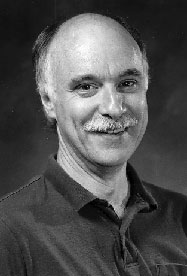"East Meets West", Music with Korean Theme |
|
| David Evan Jones, composer | |
 |
David Evan Jones is a composer of instrumental, vocal, and electronic music and a theorist writing about relationships between phonetics and music. In 1980-81, he was Composer-in-Residence at the University of York, England. He has subsequently taught at Dartmouth College and now at the University of California Santa Cruz. He has composed in residence at the Elektronmusikstudion, Stockholm and at L'Institut de Recherche et de Coordination Acoustique/Musique (IRCAM), Paris. Jones' works have been recognized by grants from the National Endowment for the Arts, the California Arts Council, and the New Hampshire Arts Council, and by an invitation to present two full concerts of his works at the Festival d'Automne in Paris. He has been awarded first prize in the Premio Ancona International Composition Competition ( Italy, 1983) and first prize in the competition sponsored by the American New Music Consortium (New York, 1985). His articles have appeared in Perspectives of New Music, Computer Music Journal, Electro-Acoustic Music, and Ex Tempore. Jones' competitions appear on compact disks from Wergo Records, Contemporary Recording Studios (Broomall, PA), Musical Heritage, Centaur Records, Capstone Records, and Composers' Recordings Inc. (New York). His latest CD, New-Balkan Jazz and Concert Music, was recently released by Centaur Records. Jones' first chamber opera, Bardos, was staged in Seoul by the Seoul Contemporary Opera Company in march 2004. He is currently at work on his third chamber opera.
“Eemulnori: Memory and Reflection ” for violin and piano was inspired by the Samulnori (사물놀이 ) tradition and composed as a gesture of respect for the spirit and musical sophistication of traditional Samulnori performers. As the title suggests, Eemulnori is in two sections. Each half remembers and develops a specific rhythmic cycle from the Samulnori performance on the compact disk set from the National Center for Korean Traditional Performing Arts. The first rhythmic cycle is from the familiar opening of the Samulnori performance. The entire first half of Eemulnori can be thought of as a series of variations on this theme. The rhythmic theme is stated clearly by the piano in bars 1-21. The violin takes the rhythmic theme in bars 22-42. The rhythmic theme is presented in a series of canons (with an added “free” voice) in the third variation that begins in bar 43. As can be seen from the score, the variations progress gradually in complexity. The fourth and last variation (bar 65) maintains a modified version of the phrase structure of the rhythmic cycle but obscures the original rhythm. The second half of Eemulnori is based upon a faster rhythmic cycle (a condensed variation of the original cycle from the same Samulnori performance). The theme of the second-half of Eemulnori (bars 84-87) is based upon the subdivisions of this four-bar rhythmic cycle. The original Samulnori rhythm is stated clearly only near the end of Eemulnori at a tempo and in a manner intended to recall the excitement at the end of a Samulnori performance. In Eemulnori, the two “objects’ played are not only instruments but rhythmic themes and emotional concepts (“memory and reflection”). The form of “play” concerns memory and change: the first half begins with a clear Samulnori rhythm and gradually diverges from it. The second half begins rather far away from the fast Samulnori rhythm but returns to it more literally at the end of the piece. The difficulty of the piece is primarily in the Samulnori rhythms themselves. Some accommodations of parts can be made if necessary to make the piece more easily playable by students. |
| Back to Home |
Contact E-mail: Sejong@SejongSociety.org
